Aquatic Invertebrates
Media
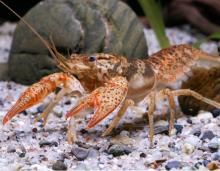
Species Types
Scientific Name
Faxonius hylas (formerly Orconectes hylas)
Description
The woodland crayfish is stout, reddish tan to dark brown, with numerous blackish specks and blotches on the pincers, carapace, and abdomen. It occurs only in Missouri, especially in the Black River and its tributaries.
Media
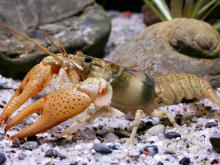
Species Types
Scientific Name
Faxonius ozarkae (formerly Orconectes ozarkae)
Description
The Ozark crayfish is light brown to reddish brown with numerous black specks on the pincers and often on the abdomen as well. The pincers are broad and powerful. It lives in the White and Black stream systems.
Media
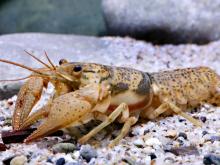
Species Types
Scientific Name
Faxonius peruncus (formerly Orconectes peruncus)
Description
The Big Creek crayfish is moderately small and brown. It has a very localized distribution centered in Big Creek and its tributaries, in the St. Francis River basin. It lacks bright colors, but blackish specks and blotches occur over the top surfaces of the body and pincers.
Media
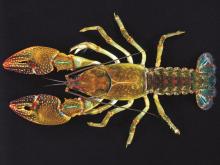
Species Types
Scientific Name
Lacunicambarus polychromatus (syn. Cambarus polychromatus)
Description
The paintedhand mudbug is a burrowing crayfish known in Missouri from only a few locations along the eastern border of the Bootheel. It is tan to olive green, and the abdominal segments and tail fan are trimmed with red. The pincers have red spots and red tips.
Media

Species Types
Scientific Name
Faxonius medius (formerly Orconectes medius)
Description
The saddleback crayfish has a bold blackish band across the hind margin of the carapace and lacks dark blotches or specks. The pincers are broad and powerful. It occurs in the Big and Meramec river drainages.
Media

Species Types
Scientific Name
Cambarellus shufeldtii
Description
Shufeldt’s dwarf crayfish is small, reddish brown to gray, with a paired series of dark, wavy stripes or dashes along the dorsal surface. In Missouri, it occurs in our southeastern lowlands and north along the Mississippi River floodplain.
Media
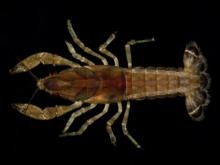
Species Types
Scientific Name
Faxonella clypeata
Description
The shield crayfish is small and tan, with a pattern of paired blackish dashes along the surface of the carapace and abdomen. The pincers are narrow, with short, abruptly tapering fingers. In Missouri it occurs only in our southeast counties.
Media
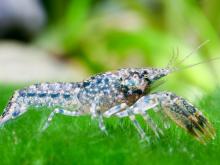
Species Types
Scientific Name
Cambarellus puer
Description
The Cajun dwarf crayfish is small, reddish brown to gray, with a paired series of dark, wavy stripes or dashes along the dorsal surface. In Missouri, it occurs in our southeastern lowlands.
Media
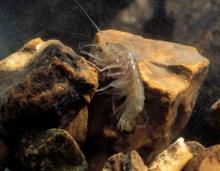
Species Types
Scientific Name
Species in the crustacean order Amphipoda
Description
Often overlooked by people, but eagerly sought by fish, Missouri’s amphipods resemble shrimplike sowbugs. Scuds live in various aquatic habitats, and several species inhabit caves.
Media
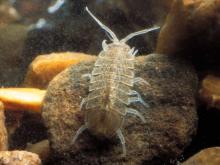
Species Types
Scientific Name
Freshwater members of the crustacean order Isopoda
Description
Everyone knows about terrestrial sowbugs and pillbugs, but many isopod species are aquatic. Missouri has several isopods that live in streams, ponds, rivers, and caves.
See Also
About Aquatic Invertebrates in Missouri
Missouri's streams, lakes, and other aquatic habitats hold thousands of kinds of invertebrates — worms, freshwater mussels, snails, crayfish, insects, and other animals without backbones. These creatures are vital links in the aquatic food chain, and their presence and numbers tell us a lot about water quality.





















